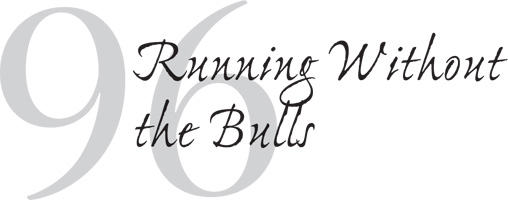

WOMEN’S MARATHON IN PALMA DE MALLORCA
The grassy band of Parc de la Mar in Palma, Mallorca’s sprawling capital city, makes a gorgeous—perhaps even inspirational—starting point for a foot race. Runners bend and stretch, loosening up under the watchful gaze of the city’s Catalan Gothic cathedral which sits just above them on a rocky shelf between the narrow streets of the old city and the glistening harbor below. It is as if the church were offering a blessing to the assembled runners as they try to banish their starting-line jitters and focus on the course ahead.
Lisa Jackson, a London-based clinical hypnotherapist and author of Your Pace or Mine? What Running Taught Me About Life, Laughter and Coming Last, participated in the first race in 2014. “Everyone on the start line in the shadow of the cathedral was exceptionally excited,” she recalls. “We knew we were making history.”
They were, in fact, the first runners in the first all-female marathon in Europe. The race was launched with the backing of Kathrine Switzer, the woman who challenged the gender barrier of the Boston Marathon in 1967. Although Switzer is no longer involved, the 261 Women’s Marathon is named for the bib number she wore on the April day in Boston when she finished the course despite the attempts of officials to stop her. Palma’s event is held in March or April, when the daily high temperatures of early spring only reach 60-65 degrees Fahrenheit. That means it’s cool enough for comfortable running, and that tourists have not yet arrived en masse. As a result, it’s also a great time of year to see the city sights.
By the second year, the 261 Women’s Marathon, which also features a 10K run, had attracted more than eight hundred runners, most of whom ran the 10K. But ever since the race started, organizers have been fine-tuning the course with an eye to giving women a good, fast route that will also delight them with all the best features of Palma. Starting in 2016, the organizers added a half marathon option for those looking for more of a challenge than the 10K race, but who were not ready to commit to the full marathon. Men, by the way, are permitted to run to support a woman runner, though few women have felt the need for any encouragement beyond the strong sisterhood around them.
The camaraderie of the runners was, in fact, one of the things that most impressed Jackson. “It was my fifty-second marathon,” she says “but my first women-only one, and I was blown away by the feeling of sisterhood and solidarity. Most of my fellow competitors spoke Spanish rather than English, but they never failed to wave or give a thumbs-up on the switchbacks. Even the leading runners patted me on the back as they sped by.”
Departing from the large green park, marathon runners complete four laps on the loop course. First they head uphill just west of the old wall into the heart of the city to the lovely eighteenth-century Baroque palace of Casal Solleric before looping back down to the waterfront. The next stage of the route passes the yacht harbor before turning around near the ferry docks to retrace the long, flat, and gently curving path along the shore. As the city’s name suggests, palms rustle in the cooling saltwater breezes.
The variety of the course is a boon to runners. “A stretch along the promenade gave us invigorating lungfuls of sea-spray-scented air,” says Jackson. “Then we plunged into the heart of Palma’s old town, full of quaint little shops, before heading out to the port, past hundreds of yachts bobbing in the bay. Having to do this section several times meant getting a good look at Palma’s architectural treasures, including its monumental cathedral. It also gave the runners a chance to cheer each other on.”
The finish line, by the way, is covered with pink carpet. The winners get no big purses, but every runner, whatever her time, receives a small pearl pendant. Palma is a city known for its style, and the island is famous for its lustrous man-made pearls—the perfect industry on an island in the middle of the Mediterranean Sea.
“I wore my pendant for several weeks because I’d had such a memorable race experience,” says Jackson. She spent her final lap running alongside a friend who got a severe cramp and was in danger of not finishing. “I’d tried to distract her from the pain by telling her funny stories. She was just one of many women who faced their fears and achieved what they’d once thought was impossible,” Jackson says. “For me the pendant symbolized not only my own joy at finishing, but their joy too.”